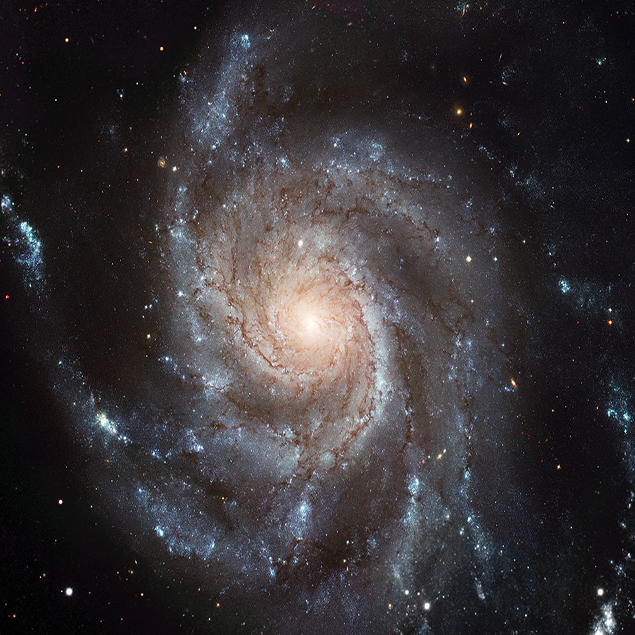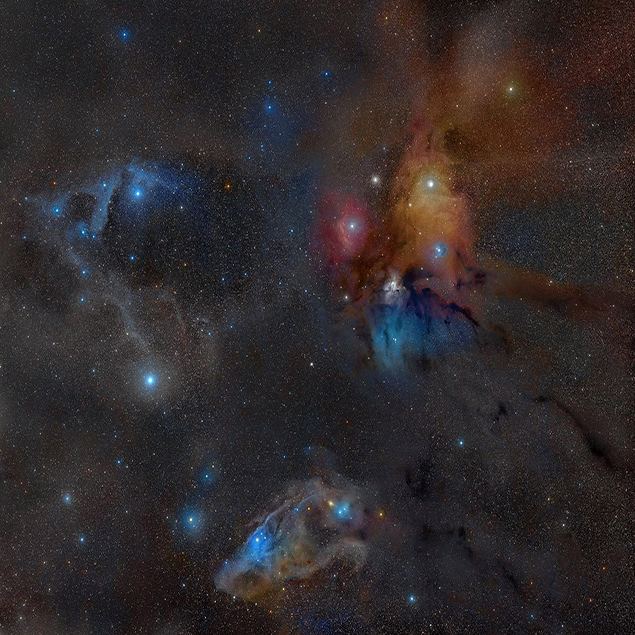Image credit: Rogelio Bernal Andreo
Nu Scorpii - Jabbah
A great multiple star for small scopes, a low magnification of 25x reveals two white stars. Increase the magnification to around 100x to see a third, pale blue star near the secondary.
Please use another browser such as Chrome, Edge, Firefox, or Safari for the best experience

Posted By: High Point Scientific
June 2021

We may be coming to the end of galaxy season, but there are still a few gems to enjoy before summer begins. M101, the Pinwheel Galaxy, can be found close to Alkaid and Mizar, two of the bright stars that make up the handle of the Big Dipper. Despite its brightness, the galaxy has a large apparent diameter, making this a challenging target for both binoculars and small telescopes.
However, a medium-sized scope, averted vision, and a magnification of 70x or more will show two faint spiral arms curling clockwise about the core. The brighter of the two originates from the southeastern side of the core, with a fainter arm originating from the west. Larger scopes may also reveal some texture within the arms.
Image source: ESA/Hubble
Venus climbs a little higher into the evening twilight and should be easily seen over the west-northwestern horizon from about 20 minutes after sunset. A one-day-old Moon appears to its lower right on the 11th. The waxing crescent Moon then hangs above Mars on the 13th. The fading red planet begins the month in Gemini and crosses into Cancer on the 8th. Saturn remains in Capricornus with Jupiter in neighboring Aquarius. Both giants can be easily seen after midnight throughout the month. The last quarter Moon appears below Jupiter on the 1st; a waning gibbous Moon then passes the planets on the 27th and 28th. Neptune rises around midnight, with Uranus following a few hours later. Elusive Mercury appears low above the east-northeastern horizon about 20 minutes before sunrise for the last few days of the month and, lastly, the Moon turns new on the 10th and then full on the 24th.

Image credit: Rogelio Bernal Andreo
A great multiple star for small scopes, a low magnification of 25x reveals two white stars. Increase the magnification to around 100x to see a third, pale blue star near the secondary.

Image credit: ESO
This globular cluster can be spotted in binoculars and is a highlight of summer skies. A telescope and a magnification of around 75x will reveal a prominent bar across its center.

Image credit: ESA/Hubble & NASA
A bright, relatively easy target for binocular observers, this globular cluster can be found within the same field of view as 5 Serpentis and shows well in telescopes.

Image credit: Bob King
M13 is a spectacular object in a telescope and arguably the finest globular in the northern celestial hemisphere. Look out for the chains of stars that curl out from its core.
Bortle Scale: Created in 2001 by John E Bortle, the scale rates the quality of the night sky with a score from 1 to 9. The best dark skies, where the Milky Way itself can cast shadows and stars of magnitude 7 or 8 are visible, would rate a score of 1. On the opposite end of the scale, inner-city skies, where only the very brightest stars are visible and the Pleiades are barely seen, would rate a score of 9.